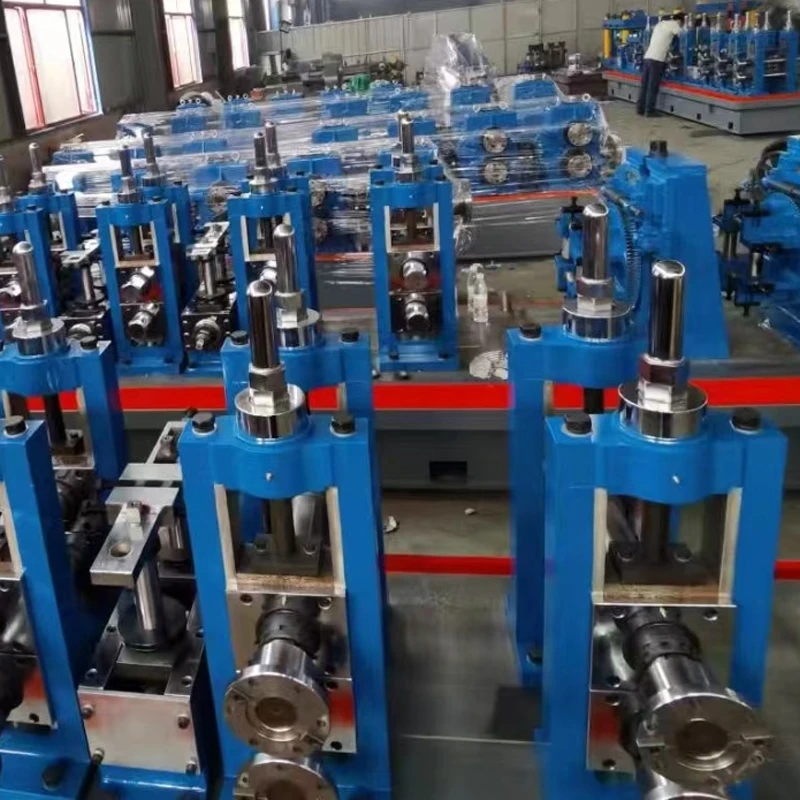industrial wire straightener
Understanding Industrial Wire Straighteners An Essential Tool for Metalworking
In the realm of metal fabrication, wire processing plays a crucial role in various applications, from construction to manufacturing delicate components. One of the indispensable tools in this process is the industrial wire straightener. This device simplifies the task of transforming coiled or bent wire into straight, uniform lengths, making it an essential component in many production lines.
What is an Industrial Wire Straightener?
An industrial wire straightener is a machine designed to straighten wire of various materials, including steel, aluminum, copper, and more. The primary function of this machine is to remove kinks, bends, and twists from wire, thereby ensuring consistent quality and precision in subsequent operations. These machines can handle different wire diameters and lengths, making them versatile for various industrial applications.
How does it Work?
The wire straightening process generally involves feeding the wire through a series of rollers, which apply pressure and align the wire to create a straightened length. The rollers may be designed with a specific profile or function to cater to different wire materials and dimensions. More sophisticated models feature adjustable settings that allow operators to control the amount of pressure applied, ensuring the wire is not only straightened but also retains its structural integrity.
Additionally, many modern industrial wire straighteners are equipped with advanced technologies such as sensors and automated systems that monitor the wire's tension and alignment. This enhances accuracy and reduces the likelihood of human errors during the operation.
Applications of Industrial Wire Straighteners
The applications of industrial wire straighteners span across numerous sectors, including
1. Manufacturing In the manufacturing industry, straightened wire is essential for creating products like springs, fences, and various components that require precise dimensions.
industrial wire straightener

2. Construction Straightened steel wire is often used in construction for reinforcing concrete structures. It’s crucial that the wire is straight to ensure proper embedding and strength.
4. Electronics In the realm of electronics, straightened wire is vital for creating circuit boards and connections, where even slight deviations can lead to failure.
Benefits of Using an Industrial Wire Straightener
1. Improved Efficiency By automating the straightening process, these machines significantly reduce labor time and increase productivity in the workshop.
2. Enhanced Quality Control Straightened wire ensures that the final products meet the required specifications, thereby minimizing defects caused by irregular wire forms.
3. Cost Effectiveness Investing in a quality industrial wire straightener can lead to long-term savings by reducing material waste and the need for rework.
4. Versatility Many industrial wire straighteners can handle various wire sizes and materials, making them useful for a variety of projects and industries, thus serving multiple functions within a single operation.
Conclusion
In conclusion, industrial wire straighteners are vital tools in the metalworking and fabrication industries. They streamline the wire processing workflow, ensuring that manufacturers and fabricators can work with precise, straight wire for their various applications. As technology continues to advance, it is likely that wire straighteners will become even more efficient and capable, providing businesses with the tools they need to improve quality, efficiency, and productivity. For any facility dealing with wire fabrication, investing in an industrial wire straightener is undoubtedly a step towards achieving superior results and maintaining competitive advantage in the market.
-
High Frequency Straight Seam Welded Pipe Production Line-BzZhou Xinghua Machinery Equipment Manufacturing Co., LTD.|line pipe steel&welded gas pipeNewsJul.30,2025
-
High Frequency Straight Seam Welded Pipe Production Line-BzZhou Xinghua Machinery Equipment Manufacturing Co., LTD.|High Precision&Automated SolutionsNewsJul.30,2025
-
High Frequency Straight Seam Welded Pipe Production Line - BzZhou Xinghua Machinery Equipment Manufacturing Co., Ltd.NewsJul.30,2025
-
High Frequency Straight Seam Welded Pipe Production Line-BzZhou Xinghua Machinery Equipment Manufacturing Co., LTD.|Precision Welding, High EfficiencyNewsJul.30,2025
-
High Frequency Straight Seam Welded Pipe Production Line|BzZhou Xinghua|Precision Welding&EfficiencyNewsJul.30,2025
-
High Frequency Straight Seam Welded Pipe Production Line - BzZhou Xinghua|Precision Engineering&EfficiencyNewsJul.30,2025


